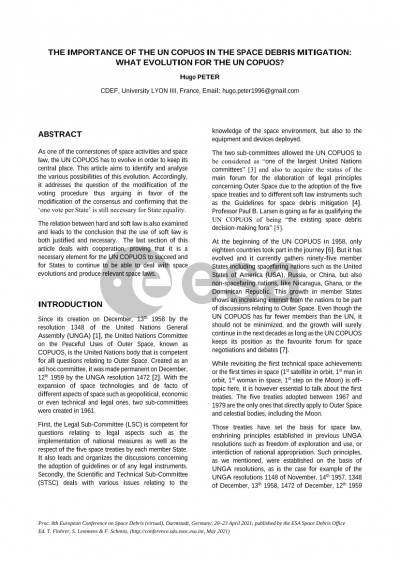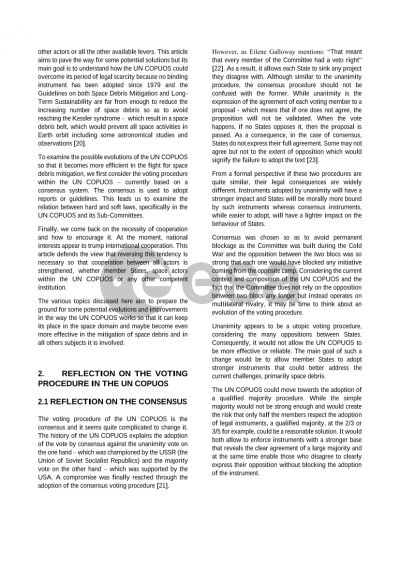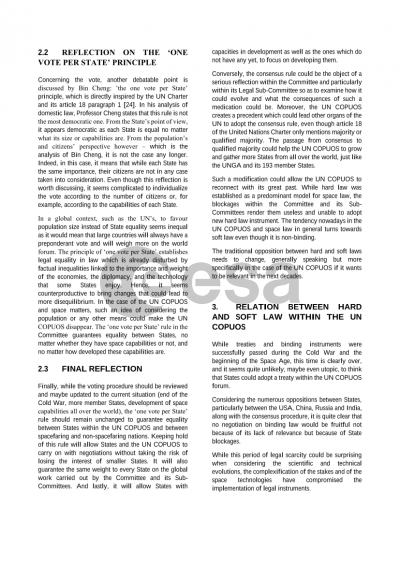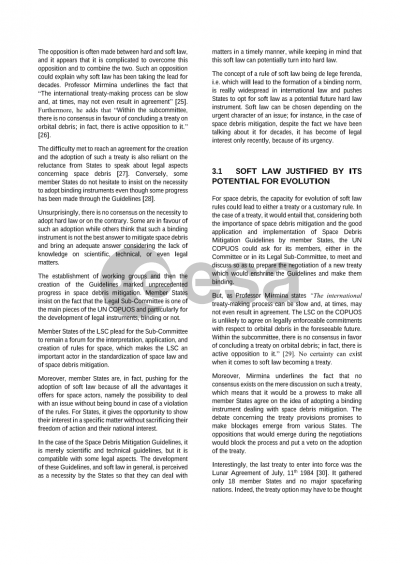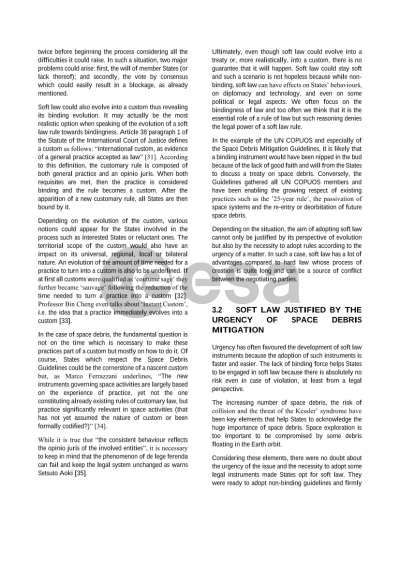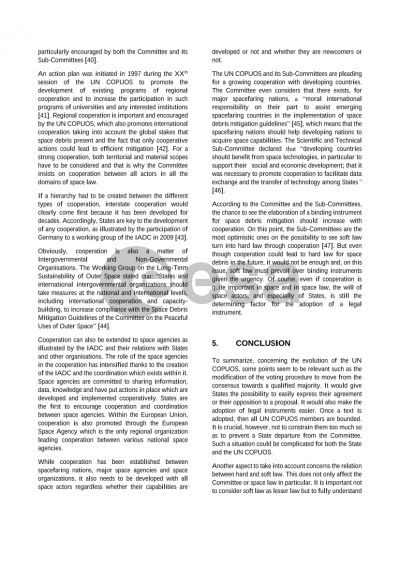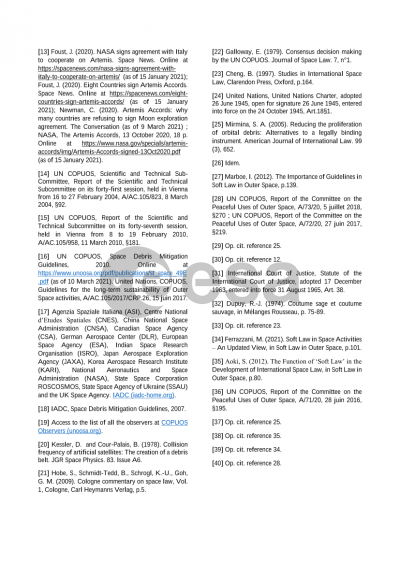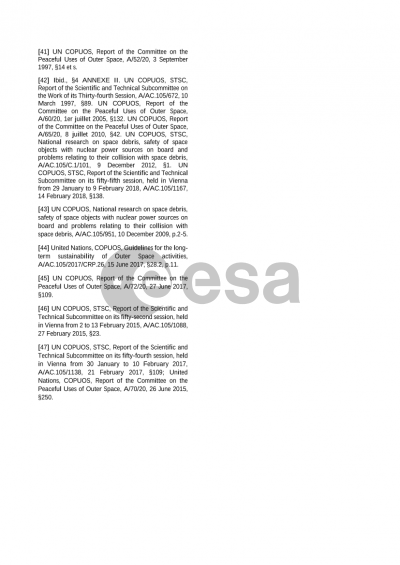Document details

Abstract
When thinking about space debris, the first image that comes to mind is that of some plastic bags floating in the empty space. NASA actually defines space debris as “any man-made object in orbit around the Earth which no longer serves a useful function. Such debris include non-functional spacecraft, abandoned launched vehicle stages, mission-related debris and fragmentations debris”. This definition makes space look much more similar to a Gravity setting than that of a drifting dustbin. If the intervention of Sandra Bullock and George Clooney is not necessary yet, these remains still raise some important issues, so much so that the United Nations (UN) created the Committee on the Peaceful Uses of Outer Space (COPUOS) to set the rules around these debris in international law.
Created in 1959, the UN COPUOS is composed of two subcommittees, one dealing with the legal aspects of space debris, and the other with the technical and scientific ones. The duality of the UN COPUOS represents its biggest strength and also necessarily implies a strong cooperation at both State and subcommittees levels. The cooperative functioning of the organisation is provided for in the Space Debris Mitigation Guidelines, adopted by the UN General Assembly through the UN Resolution 62/217 of the 22nd of December 2007.
These Guidelines set necessary rules to mitigate the proliferation of space debris, such as the 25- year rule, the reorbitation or deorbitation, re-entry in the atmosphere or even the passivation of space systems. Their adoption within the UN COPUOS revealed a growing interest for the space debris mitigation as well as it showed that States were ready to tackle this issue.
Even endorsed by the United Nations General Assembly, the Guidelines are not as legally binding as a treaty. Indeed, they are an instrument of soft law, which is often analysed as a means lacking legal structure and thereby efficiency. This implies that even if non-binding guidelines are respected by most states, this might not be sufficient to stem the proliferation of space debris and to prevent the phenomenon known as the Kessler syndrome whereby the many space debris collide so often that it further increases the amount of space debris in space and therefore the frequency of such collisions.
Yet, soft law and thus these guidelines, constitute a powerful instrument which brings about diplomatic and social effects. A soft law regulation often represents a stepping stone in the implementation of hard law (a phenomenon we call lege ferenda). In some cases, it can even lead to the creation of a custom.
Finally, the actions and the realizations of the UN COPUOS participated in making it the first world instance to discuss the issue of space debris. Although it could not be considered as a legislative body and despite its incapacity to adopt binding norms, the UN COPUOS is a forum of reflection which influences the States by making them adopt new soft law norms.
It is currently the main place for the negotiations around space debris and it should remain so by pushing States forward and strengthening the measures which have already been taken. Its ability to evolve and to put all the pieces of the puzzle in place will be decisive, both for its survival and for the long-term respect of the space debris mitigation rules.
In conclusion, this paper offers to analyse the current functioning of the UN COPUOS and to consider its possible evolution towards a more efficient and effective committee, which could either lead to a better respect of the existent non-binding rules or the adoption of new, binding ones.
Preview
